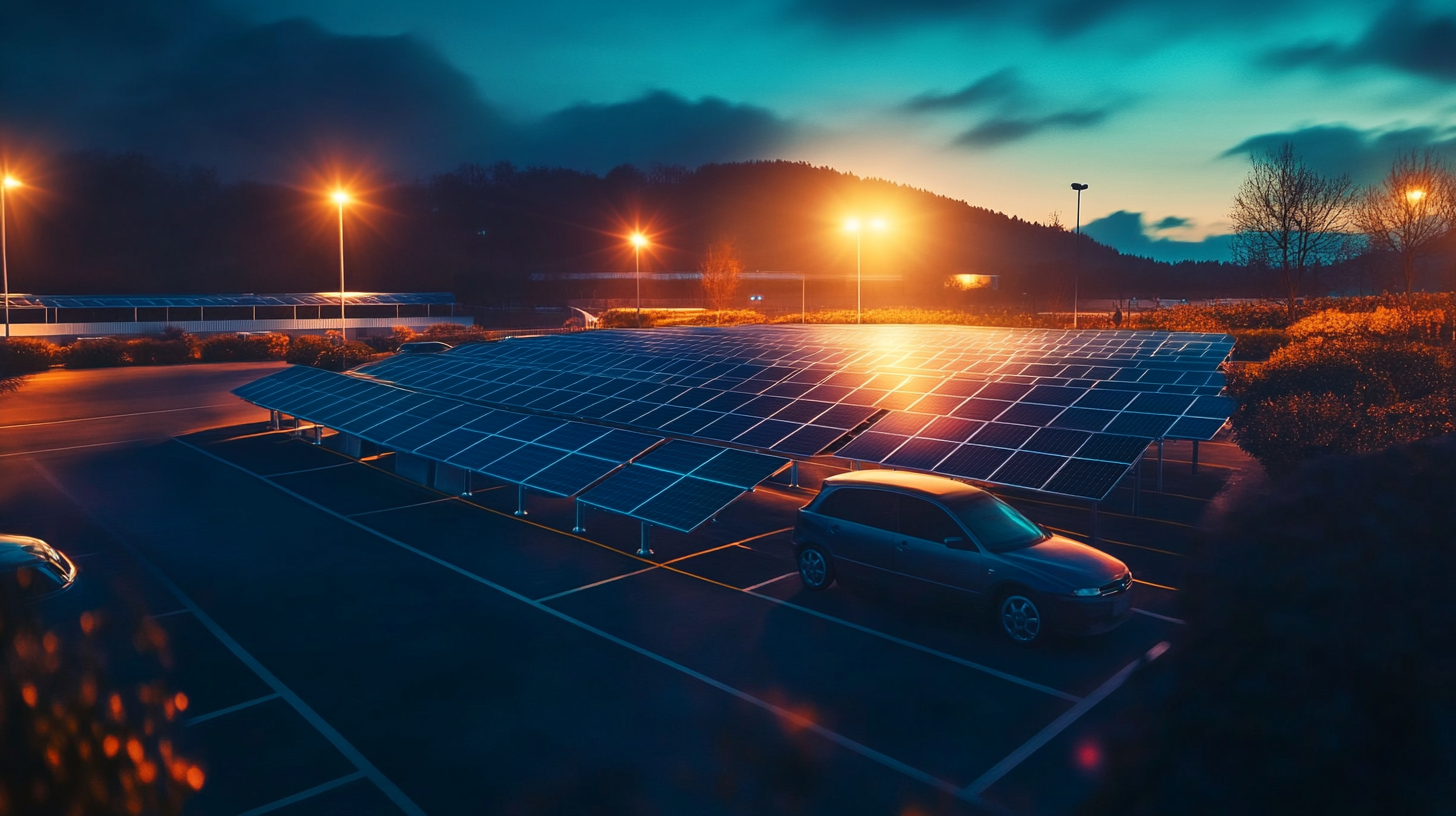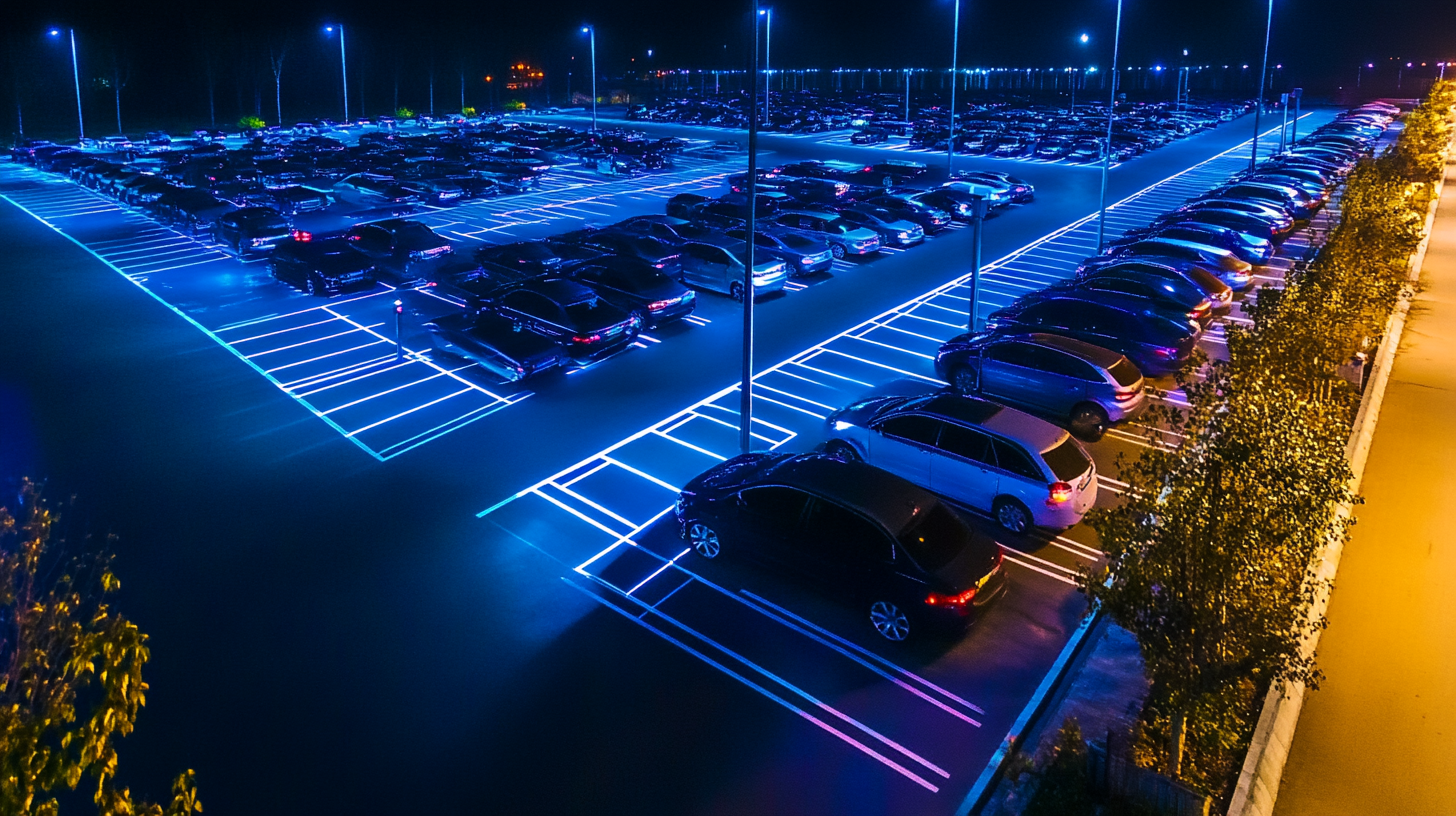Navigating Tariff Challenges How Chinese Solar Parking Lot Lights Thrive in Global Markets
In recent years, the global solar lighting market has witnessed significant growth, with solar parking lot lights emerging as a key component in this trend. According to a report by Fortune Business Insights, the solar lighting market is projected to reach USD 9.57 billion by 2026, growing at a CAGR of 15.5%. Despite the increasing tariff challenges stemming from the US-China trade tensions, Chinese manufacturers of solar parking lot lights continue to thrive in competitive global markets. This resilience can be attributed to innovations in technology, cost-effective production methods, and a growing demand for sustainable energy solutions. As municipalities and businesses seek to reduce their carbon footprints, the adoption of solar-powered parking solutions is becoming more prevalent, allowing Chinese manufacturers to capitalize on their advantages. As we navigate the complex landscape of tariffs and trade, it is crucial to explore how these challenges can be turned into opportunities for growth and leadership in the solar industry.

Emerging Trends in the Global Solar Lighting Market Amid Tariff Tensions
The global solar lighting market is currently navigating through a landscape marked by rising tariff tensions and geopolitical shifts. As countries impose tariffs on one another's imports, the ripple effects touch various sectors, including energy and solar technology. Chinese solar parking lot lights, which have capitalized on cost-effectiveness and advanced technology, are finding new opportunities even amid these challenges. This adaptability is vital as manufacturers strategize to maintain competitiveness in international markets while adhering to evolving trade regulations.
Emerging trends in the global solar lighting market reflect a shift towards resilience and innovation. Solar lighting solutions are becoming increasingly essential, not only for their energy efficiency but also due to their potential to aid countries in meeting sustainability goals. As tariff battles ensue, companies are exploring alternative sourcing and manufacturing strategies, which may lead to a more diversified supply chain landscape. The emphasis on eco-friendly products aligns well with consumer demand, ensuring that despite geopolitical tensions, the solar lighting sector continues to thrive and evolve to meet global energy needs.

Chinese Solar Parking Lot Lights: A Case Study in Resilience Against Tariff Barriers
The global solar lighting market is experiencing rapid growth, yet challenges such as tariff barriers remain significant, particularly for Chinese manufacturers. A notable example is the resilience of Chinese solar parking lot lights, which have effectively adapted to regulatory pressures and maintained a competitive edge. According to a recent report by the International Renewable Energy Agency (IRENA), the global solar energy market is projected to reach a value of $223 billion by 2026, highlighting the vast opportunities for innovation and investment in this sector.
To navigate these tariff challenges, Chinese solar lighting companies have focused on enhancing their product offerings and reducing production costs. By investing in research and development, companies like these have improved the efficiency and longevity of their solar lights, which now feature advanced technologies such as LED integration and smart grid capabilities. In addition, local partnerships in target markets have helped circumvent tariff implications, allowing for greater market penetration.
**Tip: Diversifying suppliers and materials can help companies mitigate risks associated with tariffs. By reducing reliance on a single source, manufacturers can remain agile and responsive to changing market dynamics.**
**Tip: Continuously monitoring global trade policies and engaging in proactive lobbying can be essential strategies for businesses aiming to protect their interests and navigate tariff challenges effectively.**
Navigating Tariff Challenges: How Chinese Solar Parking Lot Lights Thrive in Global Markets
| Country | Annual Solar Parking Lot Light Demand (units) | Import Tariff Rate (%) | Local Manufacturers | Competitive Advantage |
|---|---|---|---|---|
| United States | 250,000 | 25% | 50 | Cost Efficiency |
| Germany | 150,000 | 20% | 30 | High Efficiency |
| India | 300,000 | 15% | 70 | Growing Market |
| Australia | 80,000 | 10% | 15 | Sustainability Focus |
| Brazil | 100,000 | 18% | 25 | Large Urban Areas |
Strategic Innovations Fuelling Growth of Chinese Solar Lighting Manufacturers
As global market dynamics shift, Chinese solar lighting manufacturers are not just surviving—they are thriving. Their secret lies in strategic innovations that address both tariff challenges and the growing demand for sustainable solutions. By leveraging the latest technology, these manufacturers have developed highly efficient solar parking lot lights that cater to various consumer needs, making their products highly competitive on the global stage.
**Tip 1:** Embrace flexibility in design. By offering customizable lighting solutions, manufacturers can meet diverse regional requirements while appealing to local markets. This adaptability allows companies to navigate tariff challenges more effectively.
Additionally, establishing strong partnerships with local distributors can enhance market penetration. Collaborating with regional businesses helps Chinese manufacturers understand local consumer preferences and adapt their products accordingly.
**Tip 2:** Invest in R&D. Companies that prioritize research and development are better positioned to innovate, creating advanced lighting solutions such as smart features that integrate with emerging technologies. This not only improves product appeal but also sets the stage for long-term growth in an increasingly competitive environment.

Collaboration and Partnerships: Key to Navigating Trade Challenges in Solar Industry
In the ever-evolving solar industry, collaboration and partnerships stand out as critical strategies for overcoming trade challenges, especially in the context of Chinese solar parking lot lights making a mark in global markets. By aligning with local distributors, manufacturers, and even governments, companies can navigate the complex landscape of tariffs and regulations more effectively. These collaborative efforts not only enhance supply chain efficiency but also foster innovation, allowing for tailored solutions that meet diverse customer needs.
Tips for building successful partnerships include focusing on mutual benefits and open communication. Establish clear objectives from the start and ensure that all parties understand their roles. Regularly share insights and market trends to adapt quickly to changes, which is crucial in maintaining a competitive edge.
Another strategic approach is to leverage local expertise. Partnering with companies that have a deep understanding of the target market can provide invaluable insights into consumer behavior, regulatory requirements, and emerging trends. This localized knowledge can be instrumental in creating marketing strategies that resonate well with the audience, thus enhancing product acceptance in foreign markets.
Global Market Share of Solar Parking Lot Lights (2023)
The Future of Solar Parking Lot Lights: Opportunities in a Shifting Market Landscape
The global market for solar parking lot lights is rapidly evolving as countries pivot towards sustainable energy solutions. With an increasing awareness of environmental issues and the mounting pressure to reduce carbon footprints, more industries are adopting solar technologies. These solar parking lot lights not only provide illumination but also serve as a symbol of commitment to renewable energy. As urban areas become more crowded, integrating solar energy into parking lots presents an opportunity to maximize unused spaces while generating clean energy for the community.
In regions like Shandong, innovations in solar technology are leading to a more extensive adoption of green solutions. For instance, solar panels are being integrated into infrastructure, transforming traditional parking lots into energy-generating assets. This shift does not merely address energy consumption; it also reflects a broader trend within the market to embrace sustainability as a key investment area. The future of solar parking lot lights appears bright, as they not only fulfill immediate energy needs but also contribute to a larger vision of a renewable energy landscape that can drive commercial and residential development forward.
